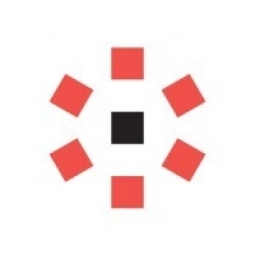Technology Category
- Functional Applications - Warehouse Management Systems (WMS)
- Platform as a Service (PaaS) - Application Development Platforms
Applicable Industries
- Finance & Insurance
- Retail
Applicable Functions
- Product Research & Development
- Warehouse & Inventory Management
Use Cases
- Construction Management
- Picking, Sorting & Positioning
About The Customer
Nedbank Group is a leading financial services group in South Africa, offering a range of services including wholesale and retail banking, insurance, asset management, and wealth management. It is one of the four largest banks in the country, serving 7.5 million customers, of which 2.3 million are digitally active. The bank has been recognized for its innovative approach to banking, receiving five accolades at the International Banking awards, including Best Banking Platform and Most Innovative Digital Products Branch Design.
The Challenge
Nedbank Group, one of the four largest banks in South Africa, was facing a significant challenge with its data infrastructure. The bank, which serves 7.5 million customers, of which 2.3 million are digitally active, was loading six terabytes of data into its operational data store and data marts on a daily basis. This sheer volume of data was proving to be a challenge for the bank's IT infrastructure to process and manage. The complexities posed by traditional data models were also a hurdle for data consumers within the organization. The bank needed a solution that would simplify its data infrastructure, reduce data integration costs, and provide a single interface for accessing all types of data within the organization.
The Solution
To address these challenges, Nedbank implemented the Denodo Platform, which allowed the bank to create a single interface for accessing data. This solution eased the complexities posed by traditional data models and reduced data integration costs. Following this, Nedbank virtualized its entire legacy data warehouse, a target state data lake, and several data marts and business data stores. This effectively made the Nedbank Denodo implementation one of the largest, if not the largest, logical data warehouses on the planet. By combining the data sources through the logical data warehouse, Nedbank was able to achieve significant efficiencies and spearhead a series of new data-driven initiatives.
Operational Impact
Quantitative Benefit

Case Study missing?
Start adding your own!
Register with your work email and create a new case study profile for your business.
Related Case Studies.

Case Study
Improving Production Line Efficiency with Ethernet Micro RTU Controller
Moxa was asked to provide a connectivity solution for one of the world's leading cosmetics companies. This multinational corporation, with retail presence in 130 countries, 23 global braches, and over 66,000 employees, sought to improve the efficiency of their production process by migrating from manual monitoring to an automatic productivity monitoring system. The production line was being monitored by ABB Real-TPI, a factory information system that offers data collection and analysis to improve plant efficiency. Due to software limitations, the customer needed an OPC server and a corresponding I/O solution to collect data from additional sensor devices for the Real-TPI system. The goal is to enable the factory information system to more thoroughly collect data from every corner of the production line. This will improve its ability to measure Overall Equipment Effectiveness (OEE) and translate into increased production efficiencies. System Requirements • Instant status updates while still consuming minimal bandwidth to relieve strain on limited factory networks • Interoperable with ABB Real-TPI • Small form factor appropriate for deployment where space is scarce • Remote software management and configuration to simplify operations

Case Study
Digital Retail Security Solutions
Sennco wanted to help its retail customers increase sales and profits by developing an innovative alarm system as opposed to conventional connected alarms that are permanently tethered to display products. These traditional security systems were cumbersome and intrusive to the customer shopping experience. Additionally, they provided no useful data or analytics.

Case Study
How Sirqul’s IoT Platform is Crafting Carrefour’s New In-Store Experiences
Carrefour Taiwan’s goal is to be completely digital by end of 2018. Out-dated manual methods for analysis and assumptions limited Carrefour’s ability to change the customer experience and were void of real-time decision-making capabilities. Rather than relying solely on sales data, assumptions, and disparate systems, Carrefour Taiwan’s CEO led an initiative to find a connected IoT solution that could give the team the ability to make real-time changes and more informed decisions. Prior to implementing, Carrefour struggled to address their conversion rates and did not have the proper insights into the customer decision-making process nor how to make an immediate impact without losing customer confidence.

Case Study
Real-time In-vehicle Monitoring
The telematic solution provides this vital premium-adjusting information. The solution also helps detect and deter vehicle or trailer theft – as soon as a theft occurs, monitoring personnel can alert the appropriate authorities, providing an exact location.“With more and more insurance companies and major fleet operators interested in monitoring driver behaviour on the grounds of road safety, efficient logistics and costs, the market for this type of device and associated e-business services is growing rapidly within Italy and the rest of Europe,” says Franco.“The insurance companies are especially interested in the pay-per-use and pay-as-you-drive applications while other organisations employ the technology for road user charging.”“One million vehicles in Italy currently carry such devices and forecasts indicate that the European market will increase tenfold by 2014.However, for our technology to work effectively, we needed a highly reliable wireless data network to carry the information between the vehicles and monitoring stations.”

Case Study
Ensures Cold Milk in Your Supermarket
As of 2014, AK-Centralen has over 1,500 Danish supermarkets equipped, and utilizes 16 operators, and is open 24 hours a day, 365 days a year. AK-Centralen needed the ability to monitor the cooling alarms from around the country, 24 hours a day, 365 days a year. Each and every time the door to a milk cooler or a freezer does not close properly, an alarm goes off on a computer screen in a control building in southwestern Odense. This type of alarm will go off approximately 140,000 times per year, equating to roughly 400 alarms in a 24-hour period. Should an alarm go off, then there is only a limited amount of time to act before dairy products or frozen pizza must be disposed of, and this type of waste can quickly start to cost a supermarket a great deal of money.








